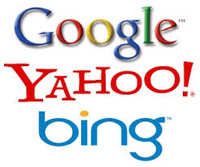If you want to appear on the critically important first page of Google search results (SERP) and capture traffic normally heading for market/brand leaders, you should read this article.
Google has been widely advocating that products such as their own AdWords enable small businesses with poorly ranking websites to appear on the critically important first page of search results (SERP) and capture traffic normally heading for market and/or brand leaders.
What they’re saying is Search Engine Marketing (SEM) is quicker to get started and more effective than Search Engine Optimization (SEO) – read much better than spending heaps of dollars or years building a first class web presence with great relevant content and securing associated back links etc.
With control of over 85% of all search traffic in Australia (and about 65% of global traffic) you would expect that what the US-based search giant says is kosher, however, as with many marketing-related concepts it is not really as straightforward as it might first appear.
In fairness, I should point out that this is really a ‘marketing’ related issue not an exclusively web/search-based one.
Of course, Google has always tried to emphasise that search results truly reflect the purchase intention of would-be buyers at that particular moment, as opposed to other media such as TV, radio and newspapers where there is no direct correlation between when a potential prospect is being exposed to an advert and when they might actually make a purchase.
Now, while the claim that the prospect is further down the purchase cycle than for traditional media is undisputed, whether the prospect has actually decided to buy at that point is another matter.
In fact, they may still want to research the product or service first.
Or, if he or she has actually completed their research previously, they will likely want to purchase a brand they already know, or buy from a trusted retailer they have dealt with in the past.
When I was a Senior Trainer for the Federal Government’s Small Business Online Program I used to explain it this way:
Imagine AdWords is a shopping centre owner who justifies his rents based on the level of foot traffic, and the website owner is the retailer paying rent to the landlord.
The landlord may guarantee the level of traffic but he does not guarantee they will enter a particular shop. And, even if they did, he certainly won’t guarantee the person will actually buy something.
The fact is, prospects usually buy products/services from companies or brands they already know, and often when the offering is attractively priced.
In my experience (online since 2001) small businesses with little brand awareness and with undiscounted or relatively expensive products have virtually no real hope of making substantial sales using SEM. All they will end up with is a big bill for clicks that never converted.
The bottom line is, your focus should always be on ‘ringing the till’ not just getting lots of web traffic. Next issue we will look at some simple (and inexpensive) ways to build traffic to your website and also techniques to convert the traffic you do attract into real sales.
 CONTRIBUTOR, Andrew M Connery: Andrew is currently undertaking doctoral research at the School of Computer Science and Software Engineering at the University of Wollongong. A B2B marketing practitioner by profession his specialty area is local search and until July 2011 he was a Senior Trainer for the Federal Government’s Small Business Online program. His latest project is a joint venture with Barnetts Couriers to introduce 24/7 smart lockers for online purchases.
CONTRIBUTOR, Andrew M Connery: Andrew is currently undertaking doctoral research at the School of Computer Science and Software Engineering at the University of Wollongong. A B2B marketing practitioner by profession his specialty area is local search and until July 2011 he was a Senior Trainer for the Federal Government’s Small Business Online program. His latest project is a joint venture with Barnetts Couriers to introduce 24/7 smart lockers for online purchases.
Comments
Powered by Facebook Comments
